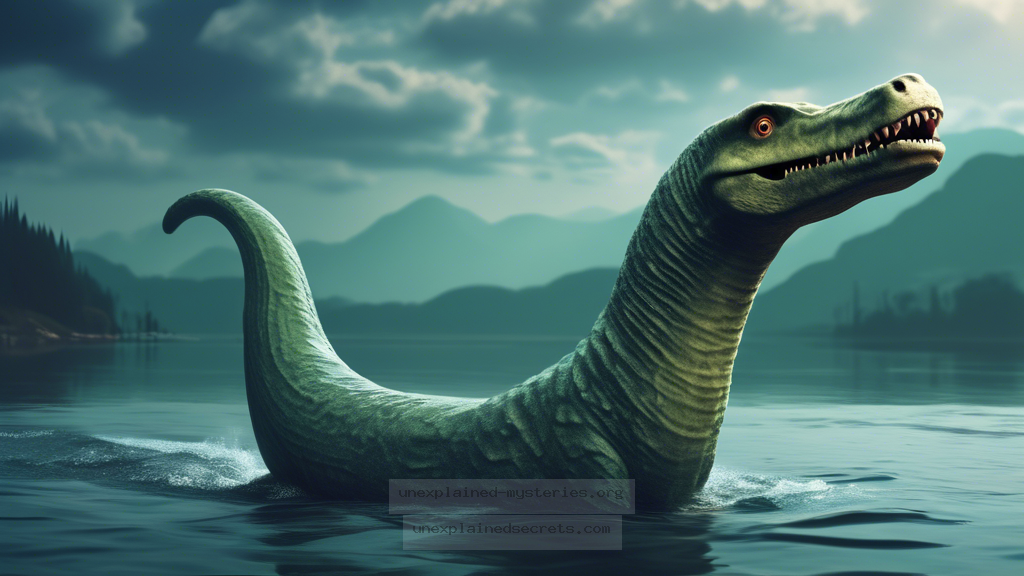Is the Mokele-Mbembe the African Loch Ness Monster or a Forgotten Dinosaur?
Is the Mokele-Mbembe the African Loch Ness Monster or a Forgotten Dinosaur?
The world of cryptozoology is filled with captivating mysteries, but few are as intriguing as the legend of Mokele-Mbembe. Often referred to as the “African Loch Ness Monster,” this creature is said to inhabit the remote rivers of the Congo Basin. But is it merely a myth, a misunderstood animal, or could it be a surviving dinosaur? The question of Mokele-Mbembe invites us to explore cryptozoology’s intersections with paleontology, folklore, and conservation. In this comprehensive post, we will delve deep into this mystery, examining historical accounts, core theories, and the practical implications of its existence.
Historical Context: The Origins of the Legend
The legend of Mokele-Mbembe has its roots in the lore of the local tribes in the Congo River Basin, particularly the Bakongo people. Descriptions of this creature date back to the early 20th century, but oral traditions suggest that stories of a large water-dwelling beast have been passed down for generations. The name “Mokele-Mbembe” translates to “one who stops the flow of rivers,” which hints at the creature’s immense size and power.
In 1776, noted explorer and naturalist Pierre-Simon Laplace recorded accounts of a large, dinosaur-like creature in the Congo. However, the first substantial report came in the 1930s, when explorer and zoologist John A. M. R. T. B. F. W. T. H. D. J. H. L. M. B. D. R. M. F. W. K. reported encounters with locals who described Mokele-Mbembe as being similar in appearance to a sauropod dinosaur.
Since then, numerous expeditions have been launched to find Mokele-Mbembe, yet none have provided conclusive evidence of its existence. This ongoing quest has cemented Mokele-Mbembe as one of the most enduring and elusive figures in cryptozoology.
Core Concepts: What Is Mokele-Mbembe?
Descriptions of Mokele-Mbembe vary, but most accounts depict it as a large, herbivorous creature resembling a sauropod dinosaur, characterized by a long neck, a bulky body, and a long tail. Witnesses often describe it as being similar to a brontosaurus or a diplodocus but emphasize its aquatic nature, with many sightings occurring near riverbanks.
Some key features commonly attributed to Mokele-Mbembe include:
- Size: Often reported to be around 30 feet long.
- Color: Descriptions vary but typically include dark green or gray skin.
- Habitat: Primarily inhabits rivers and swamps, making it difficult to observe.
The creature is said to be shy, avoiding human interaction while feeding on aquatic plants. This behavior aligns with the characteristics of many large herbivores in the animal kingdom, which tend to be elusive and cautious around potential threats.
Scientific Investigations: The Search for Evidence
Despite numerous expeditions aimed at confirming the existence of Mokele-Mbembe, scientific evidence remains elusive. Noteworthy expeditions include those led by Dr. Roy Mackal in the 1980s and Dr. William Gibbons in the 1990s. Both researchers documented local accounts and attempted to gather physical evidence, such as footprints or droppings. Unfortunately, these efforts yielded little more than anecdotal testimonies.
One of the most compelling pieces of evidence presented by enthusiasts is the discovery of large, unexplained footprints near riverbanks. However, these tracks have not been conclusively linked to Mokele-Mbembe, and skeptics argue that they could belong to known animals such as hippos or elephants. The lack of physical evidence has led many in the scientific community to dismiss Mokele-Mbembe as a myth, but proponents of its existence maintain that the creature could simply be adept at avoiding human contact.
Practical Implications: Why Does Mokele-Mbembe Matter?
The quest for Mokele-Mbembe transcends mere curiosity; it touches on themes of biodiversity, conservation, and the human imagination. Understanding the impact of such legends can provide insight into regional cultures and their relationships with the natural world. Additionally, the ongoing fascination with Mokele-Mbembe emphasizes the importance of exploring and preserving the remote ecosystems of the Congo Basin.
Moreover, the possibility of discovering a living dinosaur raises questions about the survival of other prehistoric species and the implications for conservation efforts. If Mokele-Mbembe were to be proven real, it would challenge our understanding of extinction and survival, prompting a reconsideration of how we protect endangered habitats.
Alternative Perspectives: Skepticism vs. Belief
While many enthusiasts are passionate about Mokele-Mbembe, skepticism is equally prevalent. Critics argue that the creature is a product of folklore, fueled by cultural narratives and a human tendency to believe in the extraordinary. They suggest that reports of Mokele-Mbembe arise from misidentifications of known animals, exaggerated tales, or even hoaxes.
For instance, some skeptics suggest that sightings of large creatures in the Congo could be attributed to hippos, which can reach considerable sizes and are known to be aggressive. Furthermore, the dense and largely uncharted regions of the Congo could easily conceal large animals, leading to misunderstandings and misidentifications.
Notable Fact: Hippos are responsible for more human deaths in Africa than any other large animal, often causing fear and confusion in local populations.
Common Misconceptions: Clearing Up the Myths
One common misconception is that Mokele-Mbembe is a singular entity, akin to the Loch Ness Monster. In reality, local folklore suggests that there may be multiple creatures inhabiting the Congo River and its tributaries. Furthermore, the belief in Mokele-Mbembe can be seen as part of a broader cultural context, where similar legends exist globally—each adapted to local environments and ecosystems.
Another misconception is that all expeditions seeking Mokele-Mbembe lack scientific rigor. While some enthusiasts may not follow traditional scientific methods, many researchers have approached the subject with academic scrutiny, documenting their findings and criticisms. The intersection of folklore and empirical investigation is paramount in understanding the complexity of cryptids like Mokele-Mbembe.
Best Practices for Investigating Cryptids
For those interested in investigating cryptids such as Mokele-Mbembe, several best practices can enhance the credibility and effectiveness of the search:
- Document Local Accounts: Engaging with local communities and respecting their narratives is essential. Gathering testimonies in a systematic manner can provide valuable insights.
- Use Technology: Employ modern technology such as drones, cameras, and sonar equipment to explore hard-to-reach areas.
- Collaborate with Experts: Partnering with zoologists, ecologists, and anthropologists can offer a multidimensional approach to the investigation.
- Maintain Skepticism: While passion drives the search, it is crucial to remain open to alternative explanations and to critically evaluate evidence.
Tip: Always prioritize safety and ethical considerations when exploring remote habitats.
Future Developments: Ongoing Research and Cultural Impact
The mystery of Mokele-Mbembe continues to capture the imagination of researchers, enthusiasts, and the general public alike. Ongoing research focuses not only on the creature itself but also on the environmental and cultural dynamics of the Congo Basin. As technology advances, future expeditions may yield new methodologies for exploring these remote regions.
Additionally, the cultural impact of Mokele-Mbembe is significant. The creature symbolizes the intersection of myth and reality, reflecting humanity’s enduring fascination with the unknown. As conservation efforts are implemented to protect the Congo’s biodiversity, the legend of Mokele-Mbembe may serve as a rallying point for awareness and preservation efforts.
Conclusion: The Enduring Mystery of Mokele-Mbembe
The legend of Mokele-Mbembe remains one of the most compelling mysteries in cryptozoology, inviting us to ponder the boundaries between myth and reality. While definitive evidence of its existence has yet to be found, the creature continues to inspire research, exploration, and cultural dialogue. Whether Mokele-Mbembe is a misunderstood animal, a relic of the past, or a figment of human imagination, its story reflects our desire to discover the unknown and protect the wonders of our natural world.
Other Articles
What Really Happened During the 1976 Tehran UFO Incident?
Recent Posts
- What Happened to Flight MH370? The Conspiracy Theories That Still Haunt Us
- What Secrets Lurk Within the Walls of the Infamous Trans-Allegheny Lunatic Asylum?
- What Evidence Supports the Existence of Bigfoot in the Pacific Northwest?
- What Happened to the Indus Valley Civilization? Unraveling the Mysteries of Ancient Urban Life
- Can Telepathy Be Scientifically Proven Through Laboratory Evidence?







